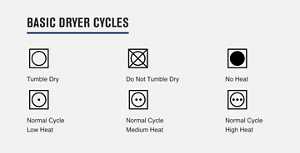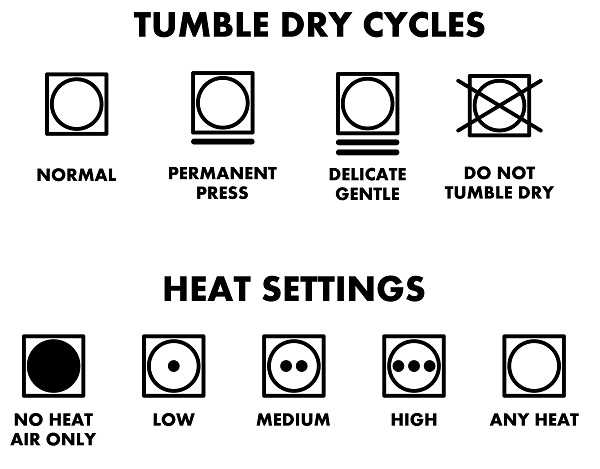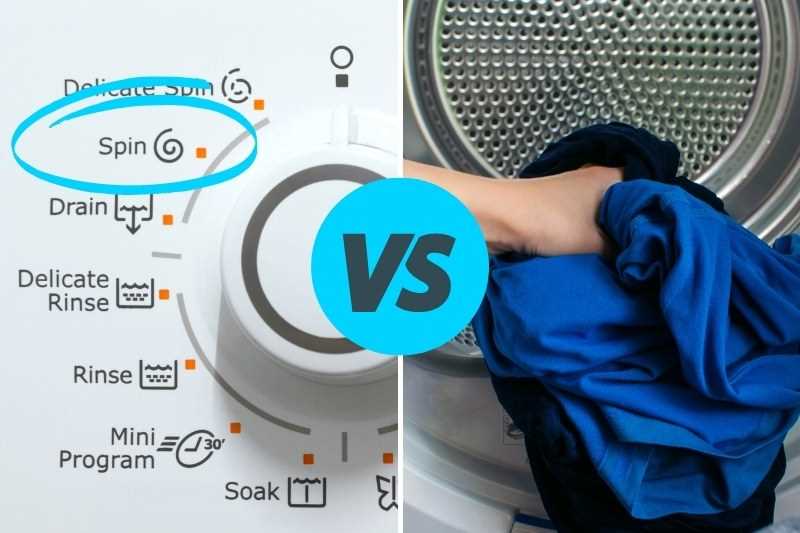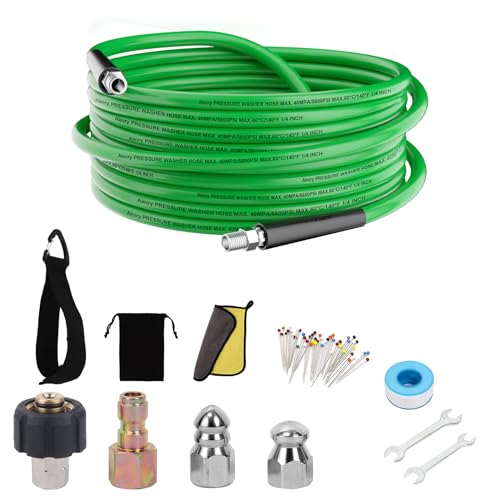




When it comes to doing laundry, there are a variety of methods and machines available to help you get the job done. Two popular options for drying clothes are spin drying and tumble drying. While they may sound similar, these two methods have distinct differences that can affect the outcome of your laundry. Understanding these differences and knowing when to use each method can help you achieve the best results.
Spin drying involves using a machine that rapidly spins your clothes to remove excess water. This method is typically used in combination with washing machines. The high-speed spinning action helps to squeeze out water from your clothes, reducing the drying time required. Spin drying is especially effective for lightweight garments and delicate fabrics that can be easily damaged by the heat and agitation of a tumble dryer.
Tumble drying, on the other hand, involves placing your wet clothes in a machine that uses hot air to evaporate moisture. This method is often used when you need to quickly dry a large load of laundry. Tumble dryers come in a variety of sizes and can accommodate different fabric types and drying preferences. They offer convenience and efficiency, but it’s important to follow the manufacturer’s instructions to avoid over-drying or damaging your clothes.
So, how do you choose between spin drying and tumble drying? The answer depends on several factors, including the type of fabric, the time you have available, and personal preference. If you have delicate garments or need to dry clothes quickly, spin drying may be the better option. However, if you have a large load of laundry or prefer the convenience of a machine, tumble drying may be a better choice. It’s always a good idea to check the care labels on your clothes to ensure you’re using the appropriate drying method.
In conclusion, spin drying and tumble drying are two distinct methods for drying clothes. Understanding their differences and when to use each method can help you achieve the best results for your laundry needs. Whether you opt for spin drying or tumble drying, always follow the recommended guidelines to protect your clothes and extend their lifespan.
Spin-Dry vs. Tumble-Dry: Understanding the Differences
When it comes to drying your clothes, there are two main methods that you can choose from: spin-drying and tumble-drying. While both methods are effective in drying clothes, there are some key differences between the two.
Spin-Dry

- The spin-dry method involves spinning the clothes at a high speed to remove excess water.
- This method is usually used in combination with a washing machine.
- Spin-drying is a quick and efficient way to dry clothes, as it removes most of the water in a short amount of time.
- However, spin-drying can be quite rough on delicate fabrics and can cause them to become wrinkled or stretched.
Tumble-Dry
- The tumble-dry method involves placing the clothes in a dryer and tumbling them with hot air.
- This method is suitable for a variety of fabrics and can be adjusted to different heat settings for specific needs.
- Tumble-drying gives you more control over the drying process, allowing you to choose the level of dryness you desire.
- However, tumble-drying can take longer than spin-drying, especially for bulky or heavier items.
When choosing between spin-dry and tumble-dry, it’s important to consider the type of fabric you are drying and the level of convenience you require. If you have delicate items or are short on time, spin-drying may be the best option. On the other hand, if you prefer more control over the drying process and don’t mind the longer drying time, tumble-drying may be the better choice.
The Importance of Drying
Drying is an essential step in the laundry process, as it helps to remove moisture from the clothes and prepares them for wearing or storage. There are different methods of drying clothes, and understanding the differences can help you choose the right method for your needs.
Benefits of Proper Drying
- Prevents Musty Odors: Properly dried clothes are less likely to develop musty odors caused by moisture, which can be unpleasant.
- Reduces Bacterial Growth: Moisture can provide an optimal environment for bacterial growth, but thorough drying helps to eliminate this risk.
- Preserves Fabric Quality: Certain fabrics, such as delicate ones, can be damaged if exposed to excessive heat or placed in a tumble dryer. Choosing the right drying method helps to preserve the quality of your clothes for longer.
Spin Dry vs. Tumble Dry
Spin drying and tumble drying are two popular methods of drying clothes, each with its own advantages and disadvantages.
| Spin Dry | Tumble Dry |
|---|---|
| Uses centrifugal force to extract moisture from clothes | Utilizes heated air to dry clothes |
| Effective for removing excess water | Efficient for drying clothes quickly |
| Gentler on delicate fabrics | Suitable for a wide range of fabrics |
| Requires less energy | May cause shrinkage or damage to certain fabrics |
Choosing the right drying method depends on various factors, including fabric type, time availability, and energy efficiency. It may be beneficial to use a combination of both methods for optimal results. Additionally, always follow the manufacturer’s instructions provided with your clothes to ensure proper drying without causing any damage.
The Spin-Dry Method: How it Works
The spin-dry method is a technique used to remove excess water from fabric by rapidly spinning it in a washing machine or a separate spin-dryer. This method is commonly used as an alternative to tumble drying, especially for delicate or easily damaged items.
Here is a step-by-step guide on how the spin-dry method works:
- Load the Machine: Start by loading the fabric or garments you want to spin-dry into the washing machine or spin-dryer. Be sure not to overload the machine, as this can lead to inefficient drying and potential damage to the items.
- Select the Spin Cycle: Next, select the appropriate spin cycle on your machine. Most machines offer different spin speeds, ranging from low to high. The higher the spin speed, the faster the machine will remove water from the fabric.
- Start the Machine: Close the machine’s lid or door and start the spin-dry cycle. The machine will begin to rapidly spin the drum, creating a centrifugal force that extracts water from the fabric.
- Monitor the Cycle: Keep an eye on the machine during the spin-dry cycle. Depending on the machine and the amount of water in the fabric, the cycle can take anywhere from a few minutes to around ten minutes.
- Remove the Items: Once the spin-dry cycle is complete, carefully open the machine and remove the fabric or garments. They should feel damp rather than soaking wet, indicating that most of the water has been removed.
It’s important to note that while the spin-dry method is effective at removing water, it may not completely dry the fabric. For completely dry clothes, you may need to hang them up or use a tumble dryer.
Overall, the spin-dry method is a useful technique for quickly removing excess water from fabric. It is especially beneficial for delicate or sensitive items that may be damaged by the heat and agitation of a traditional tumble dryer.
The Tumble-Dry Method: How it Works

The tumble-dry method is a popular way to dry clothes quickly and efficiently. It involves using a machine called a tumble dryer, which uses hot air and constant movement to dry the clothes. Here is a step-by-step breakdown of how the tumble-dry method works:
- Loading the dryer: Start by preparing your clothes for drying. Remove any excess water by wringing them or using a spin-dryer. Once your clothes are ready, load them into the tumble dryer.
- Selecting the settings: After loading the dryer, you’ll need to select the appropriate settings. Most tumble dryers have various options such as heat settings, drying time, and fabric types. Choose the settings that are suitable for your clothes.
- Drying process: Once you’ve set the desired settings, the tumble dryer will start the drying process. It will use hot air to create a warm environment inside the drum.
- Rotating drum: As the clothes tumble inside the drum, the hot air circulates around them, helping to evaporate the moisture. The constant movement prevents the clothes from getting tangled and ensures even drying.
- Condensation and venting: As the moisture evaporates from the clothes, it turns into steam. The tumble dryer will then either condense the steam into water, which is collected in a reservoir, or vent it out through an exhaust hose.
- Sensing moisture levels: Many modern tumble dryers are equipped with sensors that monitor the moisture levels in the clothes. Once the sensors detect that the clothes are dry, the dryer will automatically stop the drying process.
- Removing the dry clothes: When the drying cycle is complete, open the drum and remove the dry clothes from the tumble dryer. Fold or hang them immediately to prevent wrinkles.
Overall, the tumble-dry method offers a convenient and efficient way to dry clothes. However, it’s important to follow the manufacturer’s instructions and be cautious with delicate fabrics to avoid damaging your clothes. With proper care and understanding of the tumble-dry process, you can effectively dry your clothes using this method.
Comparing Spin-Dry and Tumble-Dry
When it comes to drying your clothes, there are two main methods that you can choose from: spin-drying and tumble-drying. Both methods have their own benefits and drawbacks, so it’s important to understand the differences between them in order to make the right choice for your laundry needs.
Spin-Dry
- Definition: Spin-drying is a process that involves rapidly spinning clothes in a drum or basket to remove excess water.
- Benefits:
- Efficient: Spin-drying typically takes less time than tumble-drying, making it a faster option for drying clothes.
- Energy-saving: Spin-drying uses less energy compared to tumble-drying, resulting in lower electricity bills.
- Gentle on fabrics: The spinning action in spin-drying is gentler on fabrics, reducing the risk of damage or shrinkage.
- Drawbacks:
- Not suitable for all fabrics: Spin-drying may not be suitable for delicate or heavily soiled items that require more gentle treatment.
- May leave clothes damp: While spin-drying removes a significant amount of water, it may not completely dry clothes, leaving them slightly damp.
Tumble-Dry
- Definition: Tumble-drying is a method that involves placing clothes in a drum and tumbling them with hot air to remove moisture.
- Benefits:
- Effective for all fabrics: Tumble-drying is suitable for a wide range of fabrics, including delicate items and heavily soiled clothes.
- Dries clothes completely: Tumble-drying typically results in completely dry clothes, eliminating the need for additional drying time.
- Drawbacks:
- Longer drying time: Tumble-drying usually takes longer than spin-drying, especially for larger loads of laundry.
- Higher energy consumption: Tumble-drying uses more energy compared to spin-drying, resulting in higher electricity bills.
- Potential fabric damage: The tumbling action in tumble-drying can be harsh on delicate fabrics, leading to shrinkage or damage if not properly monitored.
Choosing the Right Method

The choice between spin-drying and tumble-drying depends on various factors such as the type of fabric, the level of soiling, and personal preferences. If you have a small load of laundry that requires quick drying and gentle treatment, spin-drying may be the better option. On the other hand, if you have a large load of heavily soiled clothes that need thorough drying, tumble-drying may be more suitable.
It’s worth noting that some washing machines come with both spin-drying and tumble-drying functions, giving you the flexibility to choose the method that best suits your needs for each load of laundry.
In conclusion, both spin-drying and tumble-drying have their advantages and disadvantages, and the right method for you will depend on your specific laundry requirements. Consider the fabric type, level of soiling, and desired drying time to make an informed decision on which method to use.
Choosing the Right Drying Method
When it comes to drying your clothes, it’s important to choose the right method that suits your needs and the fabric of your garments. Here are a few factors to consider when deciding between spin dry and tumble dry.
Type of Fabric

The type of fabric plays a crucial role in determining the drying method. Delicate fabrics, such as silk or lace, are best suited for spin dry as it reduces the risk of damage. On the other hand, sturdier fabrics, like denim or cotton, can withstand the tumbling action of a tumble dryer.
Drying Time
If time is of the essence, a tumble dryer may be the better option. Tumble drying is faster compared to spin drying, which means you can have your clothes ready to wear in a shorter period. However, keep in mind that some fabrics may shrink or become damaged if exposed to high heat for an extended period.
Energy Efficiency
When it comes to energy consumption, spin drying is more energy-efficient compared to tumble drying. Spin dryers use centrifugal force to extract excess water from your clothes, requiring less energy to operate. Tumble dryers, on the other hand, use heat to evaporate moisture from the garments, which consumes more electricity.
Clothing Care
If you’re concerned about maintaining the quality and longevity of your clothes, you may prefer spin drying. The gentle spinning action of a spin dryer minimizes wear and tear on the fabric, keeping it in better condition over time. Tumble drying, on the other hand, can cause clothes to rub against each other, leading to pilling or other damages.
Availability and Convenience
Consider the availability and convenience of each drying method. Spin dryers are compact and lightweight, making them ideal for small living spaces or for those who frequently travel. Tumble dryers, on the other hand, are more commonly found in households and may offer additional features such as different heat settings or sensor drying.
Personal Preference
Lastly, your personal preference should also be taken into account when choosing the right drying method. Some people prefer the convenience and speed of tumble drying, while others prioritize the energy efficiency and gentleness of spin drying.
Ultimately, the choice between spin dry and tumble dry depends on your individual circumstances and preferences. Consider the factors mentioned above to make an informed decision that best suits your needs.
FAQ
What is the difference between spin dry and tumble dry?
Spin dry refers to a method of removing excess water from laundry by rapidly spinning the drum of a washing machine, while tumble dry involves drying clothes in a machine that uses hot air and a rotating drum. Spin drying is often done before tumble drying to shorten the drying time and save energy.
Which method is more energy-efficient: spin dry or tumble dry?
Spin drying is more energy-efficient compared to tumble drying. By removing excess water before tumble drying, spin drying reduces the drying time required and thus saves energy.
Is spin drying sufficient to dry clothes completely?
No, spin drying alone is not sufficient to dry clothes completely. It only removes a portion of the water. Clothes still need to be tumble dried or air dried to ensure they are fully dried.
Can all types of fabrics be spin dried?
Most fabrics can be spin dried without any issues. However, delicate fabrics or those prone to shrinking may need special care and should be air dried or tumble dried on a low heat setting.
Is there a risk of clothes getting wrinkled during spin drying or tumble drying?
There is a possibility of clothes getting wrinkled during both spin drying and tumble drying. However, by removing clothes promptly after drying and folding or hanging them properly, you can minimize the risk of wrinkles.
What is the difference between spin dry and tumble dry?
Spin dry and tumble dry are two different methods of drying clothes. Spin dry involves removing excess water from clothes by spinning them rapidly in a washing machine. Tumble dry, on the other hand, involves placing the clothes in a dryer and tumbling them with hot air to evaporate the moisture.
Which method is better for drying delicate clothes?
Tumble dry is gentler on delicate clothes compared to spin dry. The hot air in the tumble dryer is less harsh on fabrics and reduces the risk of shrinkage or damage. It is recommended to use a low heat setting or a delicate cycle when tumble drying delicate clothes.













